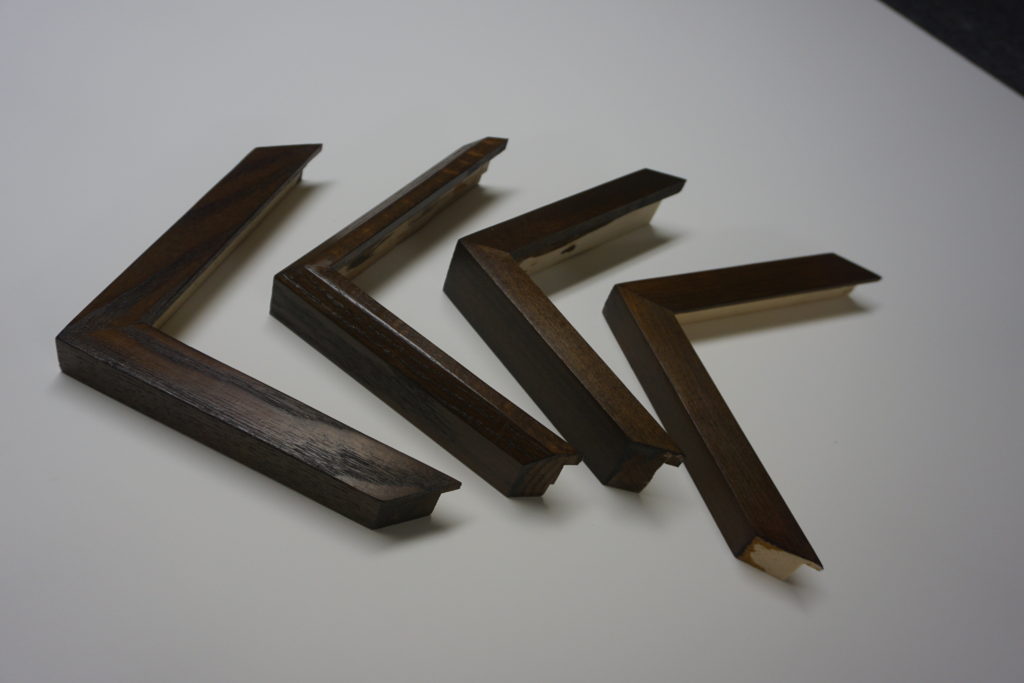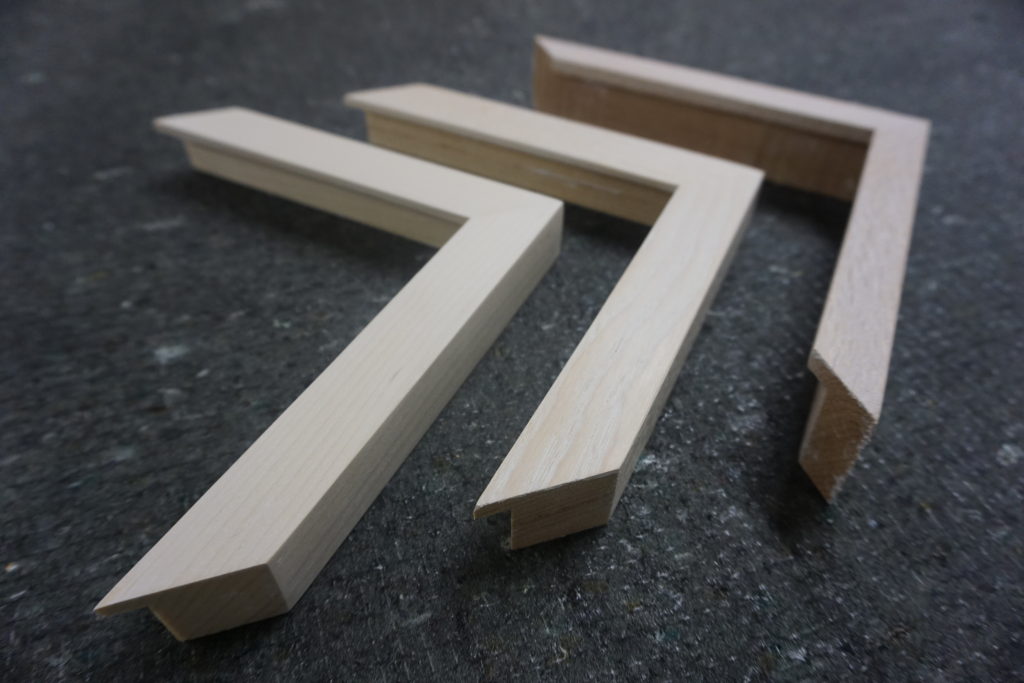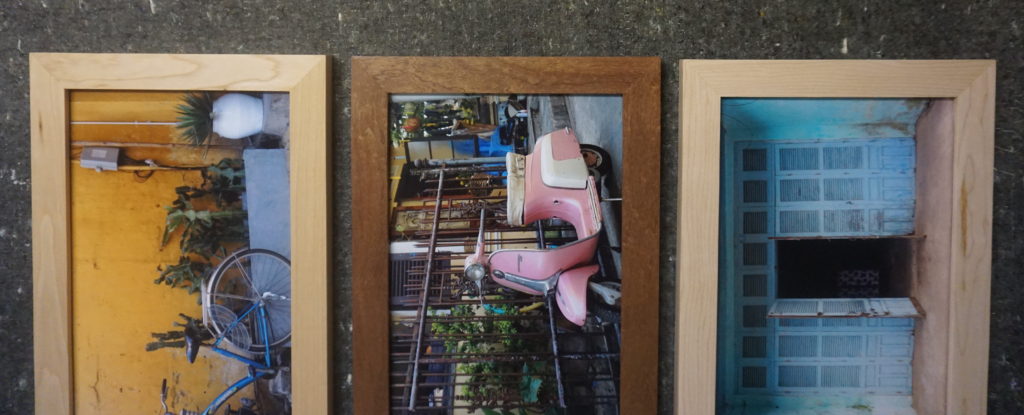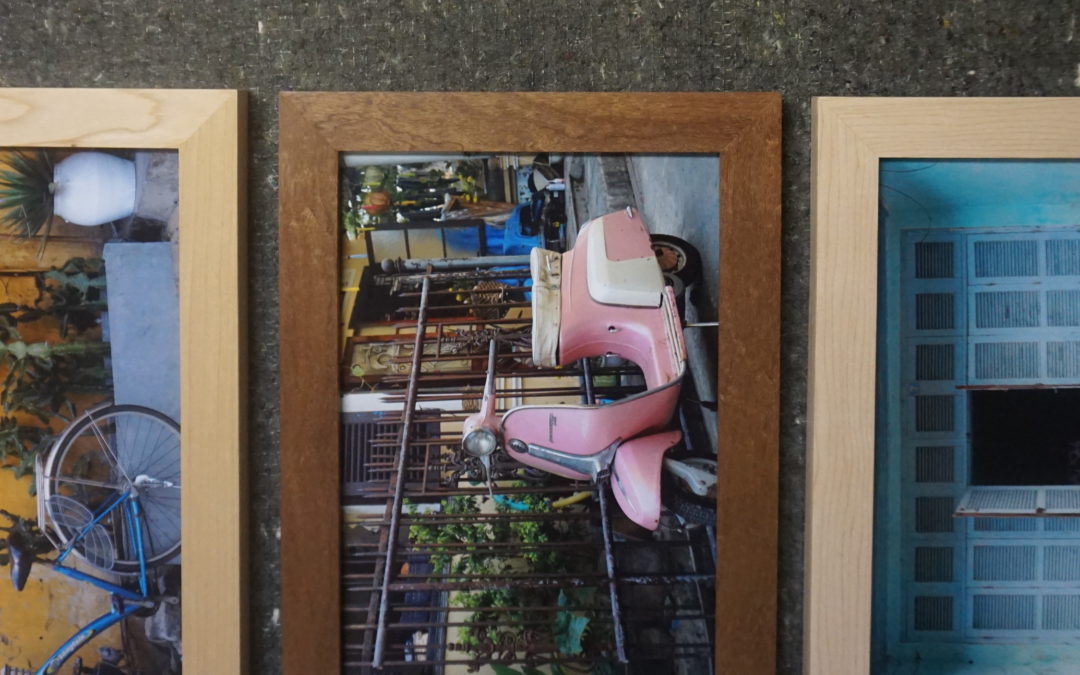When it comes to choices of custom solid hardwood picture frames, we one of the largest selections available in Ottawa in both wood species and wood finishes. Whether you want your frame to be made of waxed walnut, ebonized elm or painted poplar we have you covered. But with such a large variety of species and finishes to choose from, how do you decide which wood to use and when?
There are many things to consider when choosing the materials for a picture frame, not all finishes are suitable for all woods and some are just not practical. For example, why would you use walnut, a beautiful looking (and relatively expensive) wood, for a frame just to cover it up with a painted finish?
Our standard finishes and our favourite wood species to use with each finish are listed below
Staining
When staining wood, it is important to achieve a consistent colour across the surface of the wood. Different wood species have different cellular structures which effect the grain patterns and uptake of stains. As staining still allows for the grain to be seen, we like to stain woods with distinct grain patterns. This is not only because these woods tend to be less blotchy but also because having a more distinct grain means having a more interesting finish.
Our favourite woods to stain are red oak, white oak and ash.
Below are some examples of stained frames (L-R Ash, Red Oak, Basswood, Pine). Notice the distinct grain and consistency of colour in the ash and oak. The basswood and pine do not have an obvious grain and the finish is slightly blotchy.

Limewashing
Limewashing follows the same general rule as staining. As the liming wax fills the pores of the wood, more distinct open grain woods are better at showing the effect of the limewash. However, liming poplar, although it is a wood with a non-distinct grain, produces a subtler pale wood finish. Some woods, such as maple, do not do not take the limewash effectively and therefore is not a suitable finish.
Our favourite woods to limewash are red oak, ash and poplar.
Some examples of limewashed frames (L-R Poplar, Ash, Red Oak)

Painting and Gilding
When painting a frame, choosing an attractive wood with an interesting grain is far less important. Depending on the thickness of the paint when it is applied, the pigment tends to cover up the grain. A thin coat of paint can be used to have a similar effect as a stain, still allowing the grain to be seen. However, as the layers of paint are built to produce an opaque layer of colour, the gain of the wood is slowly covered up. This is especially the case with our Compo Paint and gilded finishes. With both of these processes, the grain of the wood is completely filled to produce an extremely flat finish. Therefore the attractiveness of the natural wood does not particularly matter and less expensive woods with less distinct grains or woods that more prone to variations in colour can be used. It is important, however, that the woods are hardwoods that take paint well and are relatively resistant warping and shrinking.
Our favourite woods to paint are poplar, birch and basswood.
An example of a compo paint finished frame completely obscuring the grain of the wood.

Waxed or Natural Finish
If we are leaving the frame natural wood and just giving it a clear coat of finish it isn’t a question of which species of wood to use, it is more of a question of which ones to avoid. There is such a wide variety of woods with different colours, shades, and grains. Ranging from light woods such ash and maple, medium woods such as cherry and oak, dark woods such as walnut, mahogany and sapele, a combination of light and dark such as zebrawood and even coloured woods like the deep purple coloured purpleheart and bright orange padauk. The colours of the woods are also not static. Natural woods age and change colour with exposure to light and the atmosphere which I feel adds to the beauty of a natural hardwood picture frame.
The choice of wood should ultimately be decided by the subject matter, tones and colours of the artwork, the surroundings that it will be placed in and of course, personal preference.
Woods we usually avoid leaving natural are pale woods with non distinct grains such as poplar, basswood and pine.
Some examples of different natural woods (L-R Cherry, Sapele, Maple)

Well, what are you waiting for? Leave a comment below if you have any questions or want any additional information.


Recent Comments